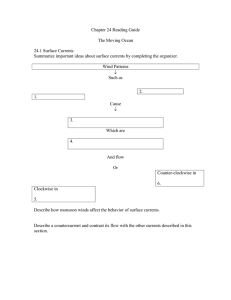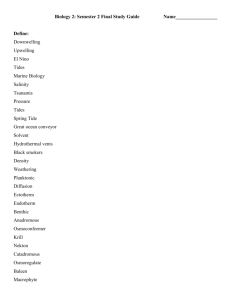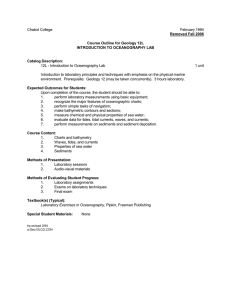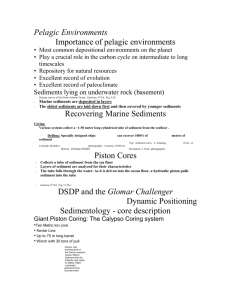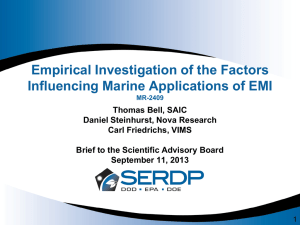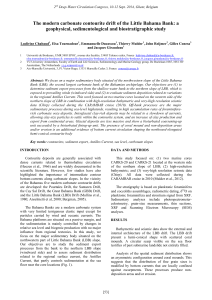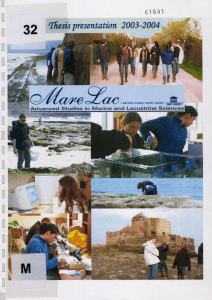OCEAN 10 Study Guide for Final Exam approximate
advertisement
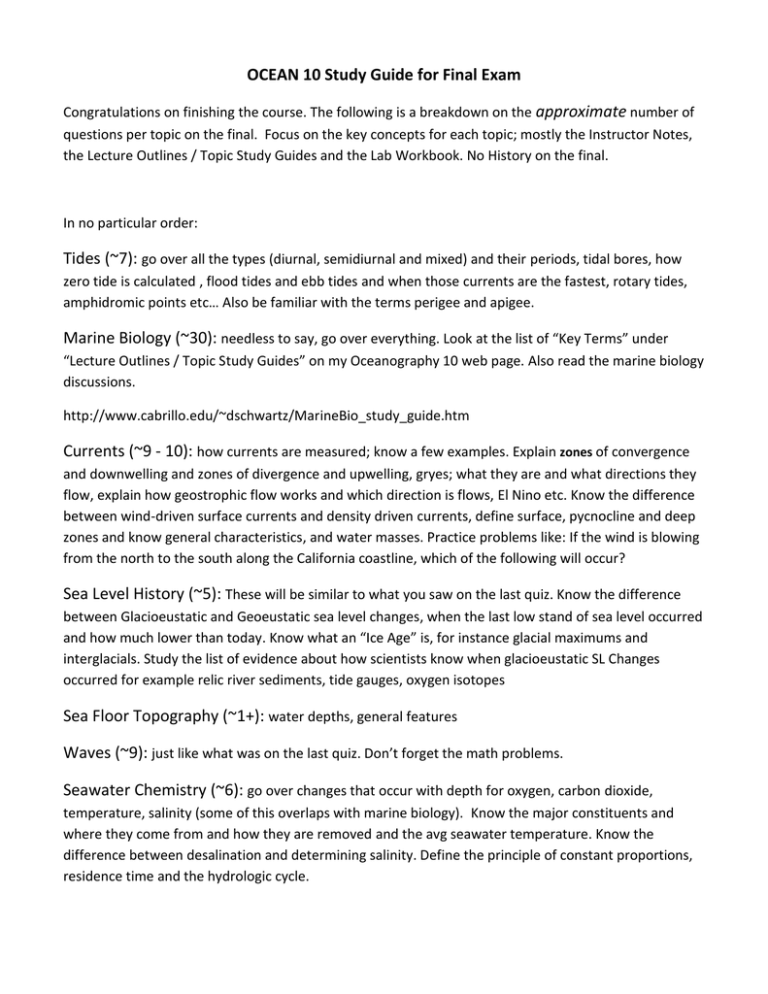
OCEAN 10 Study Guide for Final Exam Congratulations on finishing the course. The following is a breakdown on the approximate number of questions per topic on the final. Focus on the key concepts for each topic; mostly the Instructor Notes, the Lecture Outlines / Topic Study Guides and the Lab Workbook. No History on the final. In no particular order: Tides (~7): go over all the types (diurnal, semidiurnal and mixed) and their periods, tidal bores, how zero tide is calculated , flood tides and ebb tides and when those currents are the fastest, rotary tides, amphidromic points etc… Also be familiar with the terms perigee and apigee. Marine Biology (~30): needless to say, go over everything. Look at the list of “Key Terms” under “Lecture Outlines / Topic Study Guides” on my Oceanography 10 web page. Also read the marine biology discussions. http://www.cabrillo.edu/~dschwartz/MarineBio_study_guide.htm Currents (~9 - 10): how currents are measured; know a few examples. Explain zones of convergence and downwelling and zones of divergence and upwelling, gryes; what they are and what directions they flow, explain how geostrophic flow works and which direction is flows, El Nino etc. Know the difference between wind-driven surface currents and density driven currents, define surface, pycnocline and deep zones and know general characteristics, and water masses. Practice problems like: If the wind is blowing from the north to the south along the California coastline, which of the following will occur? Sea Level History (~5): These will be similar to what you saw on the last quiz. Know the difference between Glacioeustatic and Geoeustatic sea level changes, when the last low stand of sea level occurred and how much lower than today. Know what an “Ice Age” is, for instance glacial maximums and interglacials. Study the list of evidence about how scientists know when glacioeustatic SL Changes occurred for example relic river sediments, tide gauges, oxygen isotopes Sea Floor Topography (~1+): water depths, general features Waves (~9): just like what was on the last quiz. Don’t forget the math problems. Seawater Chemistry (~6): go over changes that occur with depth for oxygen, carbon dioxide, temperature, salinity (some of this overlaps with marine biology). Know the major constituents and where they come from and how they are removed and the avg seawater temperature. Know the difference between desalination and determining salinity. Define the principle of constant proportions, residence time and the hydrologic cycle. Sediment (~5): Go over why it’s important, types of shelf sediment, oozes, lithogenous, types of organic contributors (some marine bio overlap) Coastal Processes (~7): beach parts, summer vs winter beaches, the shore, building in the shore, Elkhorn Slough, etc.. Lab #2 Math (~7 - 8): get the Lab Workbook out and solve all these problems if you need this review Lab #6 Materials of the Seafloor (~5): Practice the math and other concepts such as factors that determine the rate of sediment accumulation, what you would or would not find below the CCD, where you would expect to find turbidites Plate Tectonics (~2): general i.e. the plate boundaries and examples of locations, focus on the tectonic setting (passive / active) of the major continental margins, define SFS and go over some proofs (magnetic anomalies & polar reversals, sediment thickness, sediment age, heat flow. Also, always remember what Alfred Wegener (1880 – 1930) knew, and did not know. Beach Sands (~3): review the basics Geologic Time: (~1): Era boundaries, practice one more time, this is good stuff for life.
